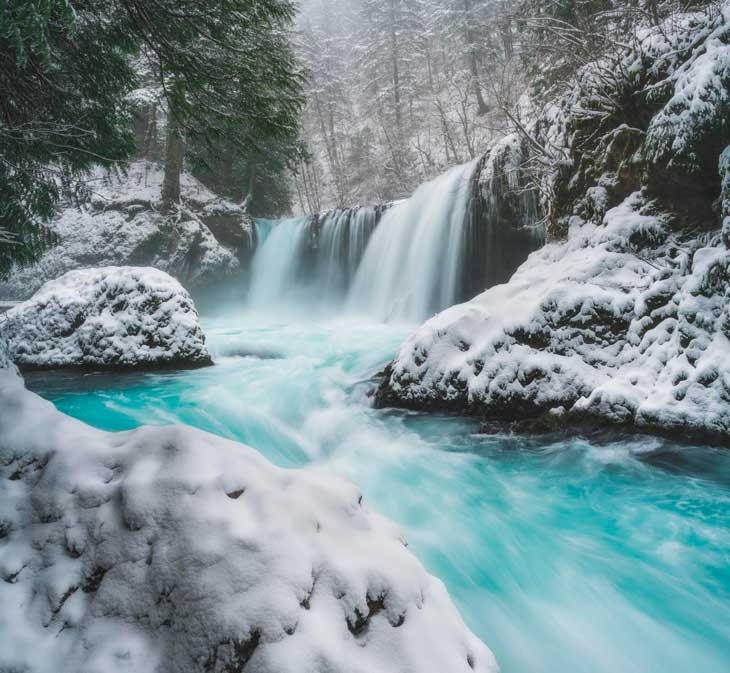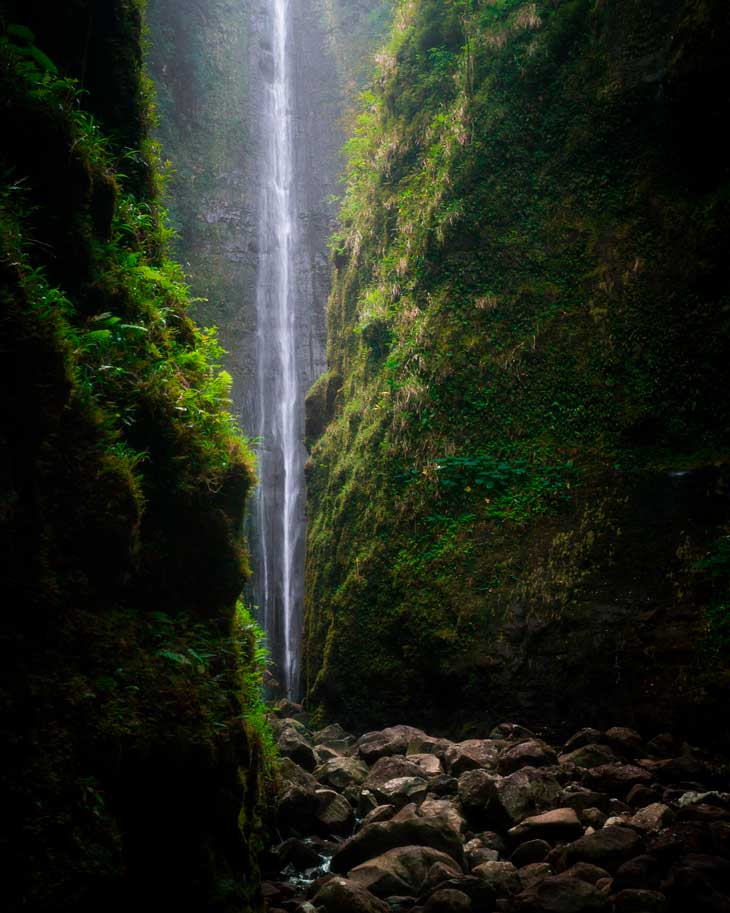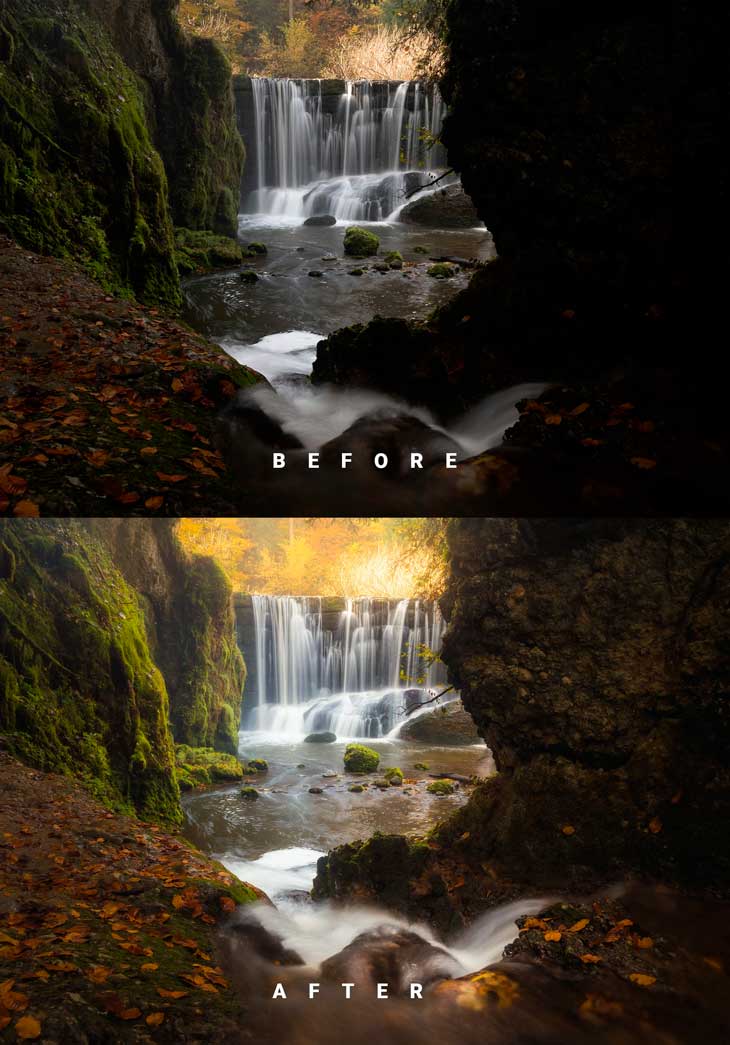If you have been scouring the internet for guidance on capturing the perfect waterfall photo, your search concludes right here. We are excited to provide a thorough photography manual created for photographers of all experience levels looking for insightful advice.
In this article, you will learn how to master changing your camera settings to fit various situations. You will gain insights into selecting the ideal configurations for capturing the serene, silky flow of water surfaces, as well as those that emphasize the sheer power of mighty waterfalls.
Some Basics to Know

Photographing waterfalls is an art that hinges on the recognition of each waterfall's distinctiveness. As such, the approach to capturing these natural wonders may differ from one to another.
Achieving mastery in waterfall photography requires a blend of technical acumen and artistic flair. It encompasses everything from choosing the perfect vantage point and perspective to grasping the nuances of the right waterfall photography settings.
Additional elements such as the time of day, prevailing weather conditions, and the surrounding landscape can wield significant influence over your final masterpiece.
Without a doubt, possessing the right equipment and a deep understanding of its effective utilization form the bedrock of successful waterfall photography. Thus, let's dissect the essential components.
Tips on How to Make Waterfall Photography

Capture Their Motion
Waterfalls possess a captivating dynamism in their movement, transitioning from the gentle meandering of water over rocks to the thrilling spectacle of a cascading torrent, replete with splashes and sprays.
To encapsulate this vibrant motion, it is essential to configure your camera settings before embarking on your photographic journey. Thus, switch your camera into shutter priority or manual mode and make the following adjustments:
Shutter Speed
Waterfalls are as unique as fingerprints, each possessing its own distinct character. Consequently, there is no universal correct shutter speed to employ.
However, to capture the water's graceful movement, you will want to work with a slow shutter speed, typically ranging from 0.3 seconds to several seconds.
As a general guideline, commence with a 1-second shutter speed and capture a test shot. Evaluate it on your camera's LCD screen, refining the settings until you achieve the desired level of water blur. Do not fret if the image appears overexposed; we will make additional adjustments to rectify that issue.
- Sturdy tripod: A robust tripod is indispensable when working with such slow shutter speeds, as handheld photography becomes impractical.
- Low ISO: Set your ISO to its lowest value, typically around ISO 100. This minimizes your camera's sensitivity, enabling longer shutter speeds without overexposing the image. Furthermore, it reduces digital noise, resulting in cleaner photos.
- Narrow aperture: Utilizing your lens's smallest aperture lets you employ longer exposure times while achieving maximum depth of field, ensuring that a larger portion of your scene remains in focus.
- Filters: If you find it challenging to achieve the desired slow shutter speed, filters can help reduce the amount of incoming light. Professional nature photographers often rely on neutral density (ND) filters, which decrease light intensity without affecting color accuracy. Another effective option is a polarizing filter, which serves the same purpose as an ND filter while additionally reducing reflections, such as those from water, wet surfaces, and foliage, and enhancing color saturation for more vibrant images.
Shoot at the Right Time of Day
Harsh sunlight can easily spoil a waterfall photograph by casting intense shadows and causing distracting reflections on the water and wet surfaces.
These reflections often appear as small, undesirable white dots in your image. To mitigate these challenges, opt for shooting during the golden hour, around sunrise or sunset.
These times allow for a more balanced exposure since the sunshine is less strong and more dispersed. Additionally, using a slower shutter speed efficiently is made simpler by the reduced light levels. Overcast days also provide favorable lighting conditions for similar reasons.
Find an Intriguing Composition
While it is essential to consider the technical aspects of waterfall photography, do not forget to tap into your creative side. Waterfalls, like any other subject, benefit from a thoughtful and captivating composition.
- Seek out unconventional perspectives:
When confronted with a waterfall, the typical approach is to stand on the riverbank downstream and aim the camera directly at the falls. However, this often results in mundane photos that lack inspiration. To infuse creativity into your shots, invest time in exploring your surroundings to discover more captivating perspectives. Experiment with high angles, shoot through foliage, capture images from behind the waterfall, or position your camera just above the stream for a fresh and unique viewpoint. - Incorporate scenery or people:
While waterfalls possess inherent beauty, many can seem quite similar. To distinguish your photos, consider including additional elements that enhance the overall scene. Incorporate foreground rocks, bridges, or interesting flora to provide context and depth, allowing viewers to immerse themselves visually in the environment. Furthermore, adding people to the composition can create a focal point that elevates the image's interest level and offers a sense of scale. - Opt for landscape orientation:
Waterfalls are often tall and slender, leading many photographers to instinctively hold their cameras in portrait orientation. However, this habit can yield images that resemble countless others. Opting for landscape orientation might initially feel unconventional, but it encourages a more comprehensive approach to framing the scene, enabling you to capture more of the surroundings and stimulate your creative framing skills.

A compelling blend of technological know-how, creative flair, and the art of patience is waterfall photography. You may capture the utter majesty of waterfalls by summoning the spirits of rain, searching for the elusive mist, mastering the slow shutter technique, creating your compositions, and honing your timing.
Immerse yourself in the captivating charm of waterfalls as you travel across rough terrain and enjoy the soothing embrace of misty showers. Use these natural treasures to fuel your passion for photographing nature's magnificence.
When you push the shutter and capture the elegant fluidity of the waterfall in stillness, you transform into a storyteller and reveal the wonders of these unspoiled treasures to the world.
So go ahead with vigor, enjoy the rain's caress, dance with the fleeting mist, fudge the lines between reality and illusion, capture the inherent beauty, and take the ideal opportunities.
May your waterfall photos serve as a witness to the pleasure, the adventure, and the valuable moments that come with being a photographer engaged in the captivating world of waterfalls.
Happy photography, my dear friends, and may your images capture the majestic majesty of these enormous natural wonders.